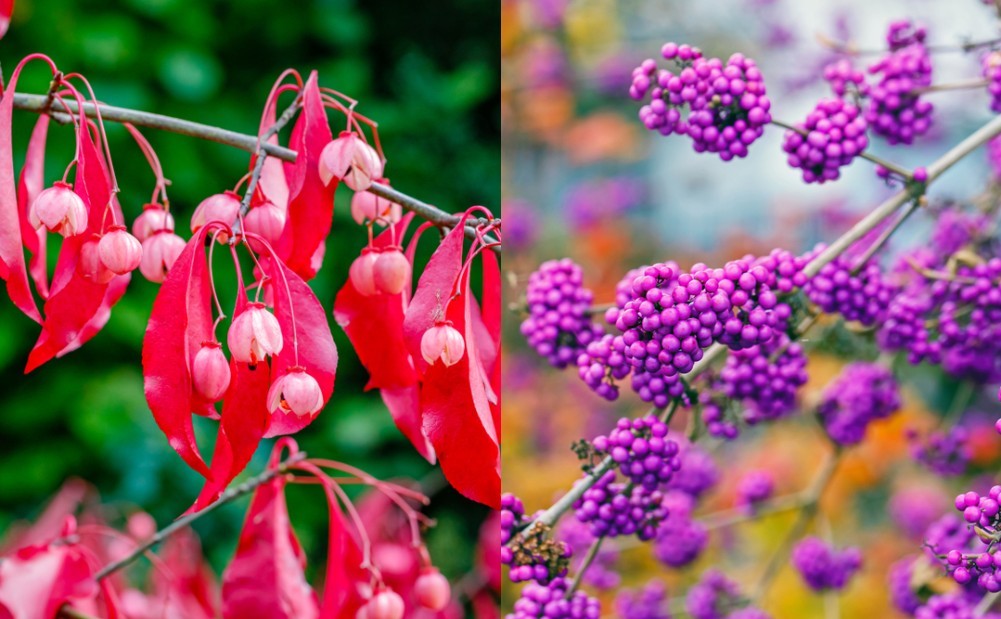

As summer season season attracts to an in depth and the spectacular blooms and hues of the vernal yard start to fade, there are nonetheless an excessive amount of choices to seize the distinctive unbelievable issue in regards to the altering of the seasons.
In spring and summer season season, deciduous crops are rife with chlorophyll, which supplies foliage its inexperienced shade. As days develop shorter, lots a lot much less chlorophyll is produced to point hidden hues that had been current all of the whereas, we merely couldn’t see them.
These pigments embody carotenoids (yellows and oranges) and anthocyanins (reds, blues, and purples) that reveal themselves when given lots a lot much less gentle and cooler temperatures.
The right gardens are people who’ve fascinating colours, textures, and shapes irrespective of the time of yr. And the autumn yard might very effectively be a extraordinarily spectacular displaying of transition.
Listed below are only a few of one of the best foliage crops that explode with shade, placing out a stunning current from late summer season season and into early winter:
1. Sugar Maple
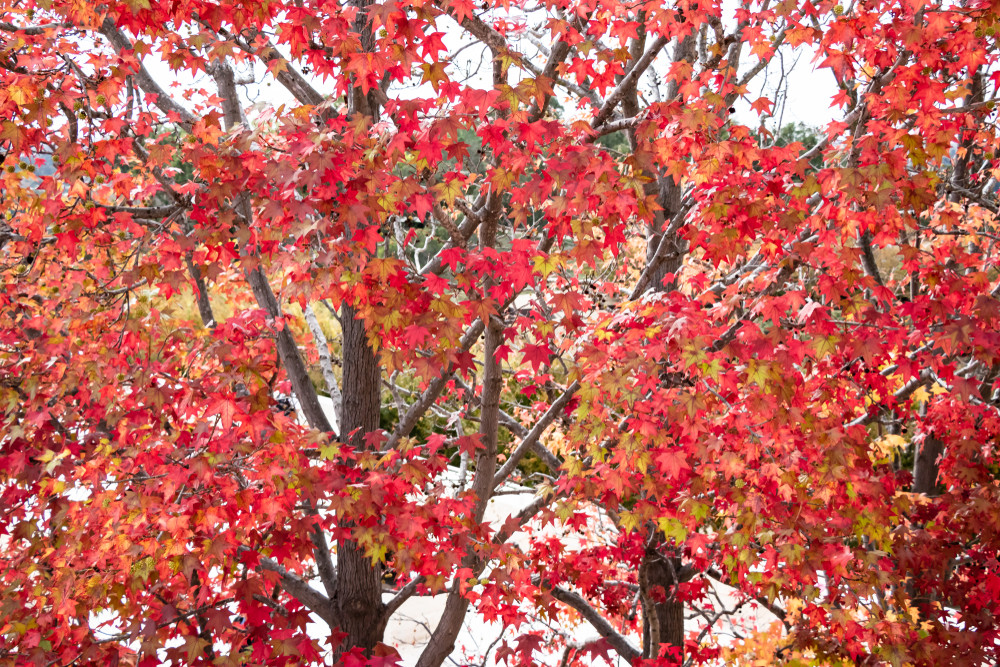

Sugar maple (Maple sugar) is a shade tree famend for its spectacular foliage colours.
Beginning out as emerald inexperienced in spring and summer season season, sugar maple leaves slowly transition to lime inexperienced, vivid yellow, vibrant orange, and fireplace engine purple, ending its cycle in a deep burgundy.
Along with its magnificence, sugar maple is an excellent present of maple syrup.
When the diameter of the tree trunk is bigger than 10 inches, it is likely to be tapped in your personal present of the candy stuff.
Native to central and jap parts of North America, sugar maple is hardy in USDA zones 3 to eight.
Though sugar maple prefers full picture voltaic, it will possibly perhaps adapt to partial shade. All through the forests, sugar maple can attain heights of as lots as 120 toes, nonetheless in residential settings it should sometimes solely develop to 70 toes over its 200 yr lifespan.
2. Quaking Aspen
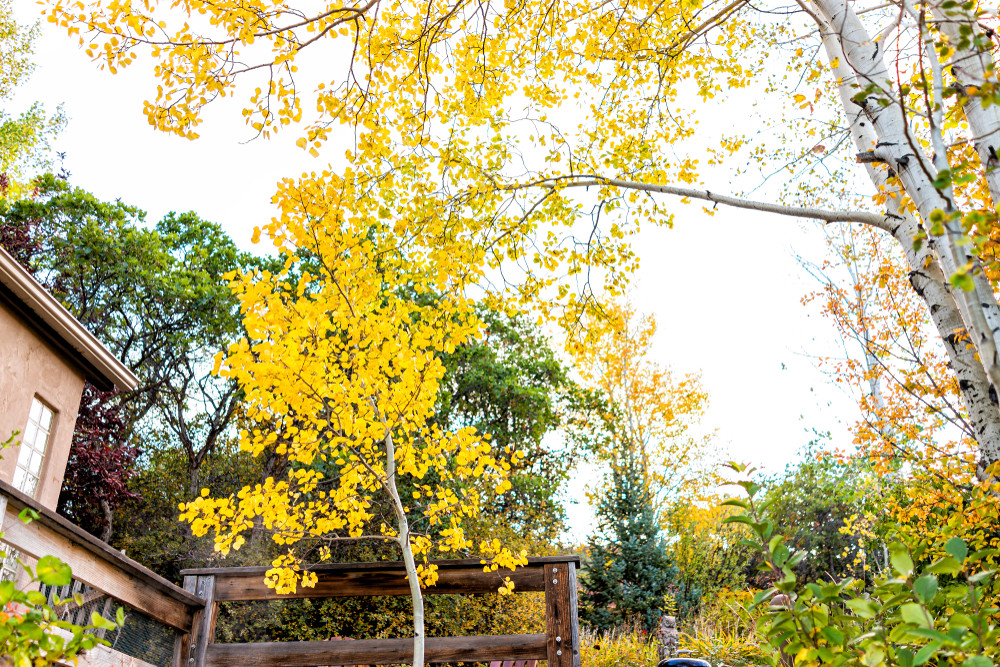

A tall and slender tree, quaking aspen (Tremulous folks) is so named due its conduct of shivering and trembling all through the breeze.
Rising as lots as 80 toes at maturity, quaking aspen is notable for its clear silvery trunk topped with a cover of rounded, barely serrate leaves that begin out lime inexperienced and transition to golden yellow in autumn.
Hardy in zones 1 by way of 7, quaking aspen’s native fluctuate spans Alaska all one of many easiest methods all the best way through which proper right down to the mountains of Central Mexico.
It’s a quick grower too, rising its peak by 24 inches yearly. Plant quaking aspen in full or half picture voltaic in a spot with acidic, loamy soil.
3. Staghorn Sumac
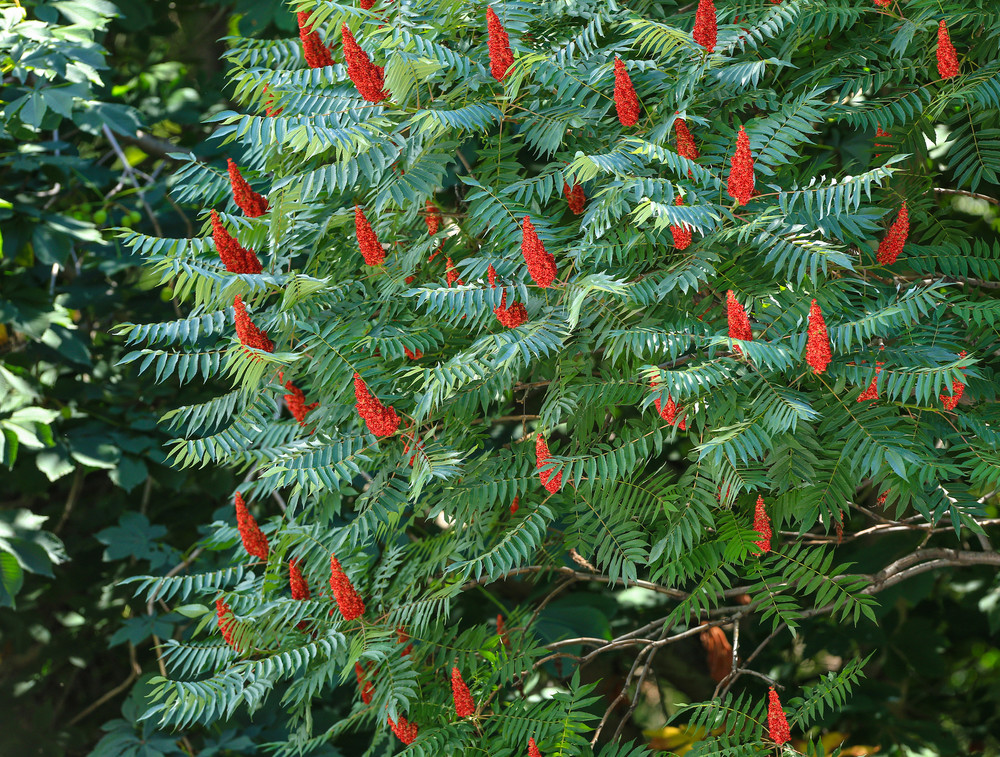

Sumac (Rhus spp.) is a sort of small tree or shrub present in temperate areas all via the globe.
In North America, there are a number of species of native sumac that present seasonal curiosity all yr prolonged.
Notable for its vivid, eye-catching foliage in autumn, sumac furthermore produce big floral spikes in spring that mature into vibrant clusters of drupes that persist into winter.
These berry like fruits present a perfect present of meals for native wildlife too.
Staghorn sumac (R. typhina) has a fern-like look, with feathery leaves which are pinnately organized alongside the stem.
Named for its forking branches which have a velvety texture, just like antlers, staghorn sumac’s foliage turns eye catching colours in fall, starting from vivid purple to orange to burgundy.
Staghorn sumac is hardy in zones 4 to eight.
Fully completely different good fall foliage sorts of sumac embody aromatic sumac (R. aromatica), clear sumac (R. glabra)prairie sumac (R. lanceolata)and shining sumac (R. copalinus).
4. Burning Bush
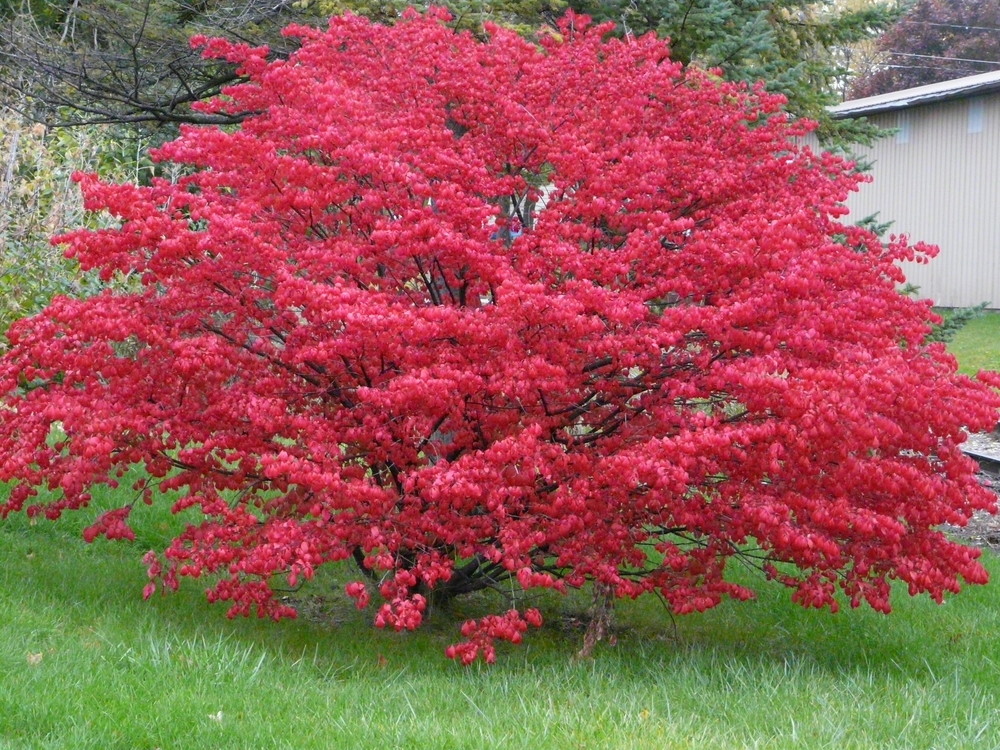

Everytime you want a shock of purple in your autumn panorama, burning bush (Euonymus atropurpureus) will definitely match the invoice.
Moreover often known as jap wahoo, burning bush is a part of the bittersweet household and is indigenous to the Midwest, discovered as far south as Florida and Texas.
An upright shrub which is able to attain a peak of 20 toes and 25 toes broad, it produces a clump of branches at its base that stretch outwards to selection an irregular crown of elliptical leaves.
Inexperienced in spring and summer season season, burning bush turns a dramatic scarlet purple in fall with dangling fruit clusters – toxic to us nonetheless moderately lots beloved by wild birds.
Requiring full picture voltaic to half shade, burning bush is hardy in zones 3 by way of 7.
5. American Smoke Tree
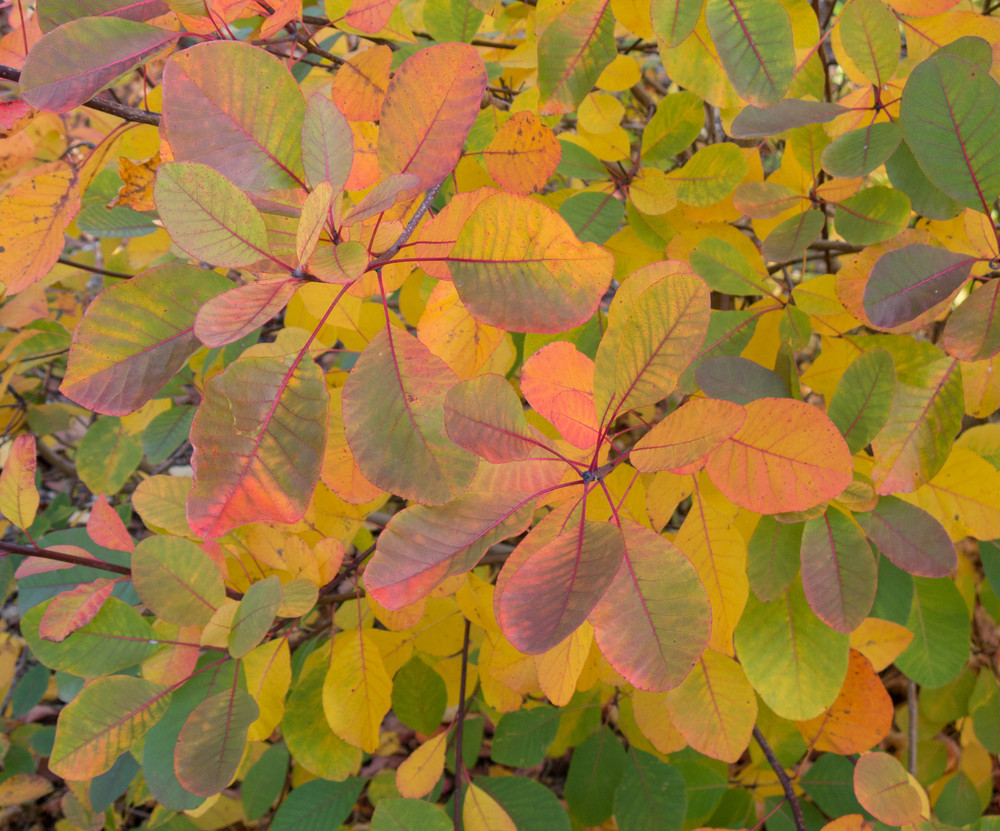

American smoke tree ((Continued) is so named for its floral clusters that, when spent in midsummer, flip into fluffy, billowy hairs that seem as puffs of pinkish smoke over its crown.
Usually thought-about to be top-of-the-line native bushes for good fall shade, American smoke tree transitions from blue-green leaves to an array of autumnal hues, together with yellow, purple, orange, and purple.
Reaching a measurement of 20 to 30 toes tall and broad, American smoke tree requires full picture voltaic and medium moisture.
It adapts efficiently to many soil sorts nonetheless prefers well-draining, considerably infertile loamy soil.
Although American smoke tree’s native fluctuate is the southern United States, it’s hardy in cooler climes from zones 4 to eight.
6. Virginia Creeper
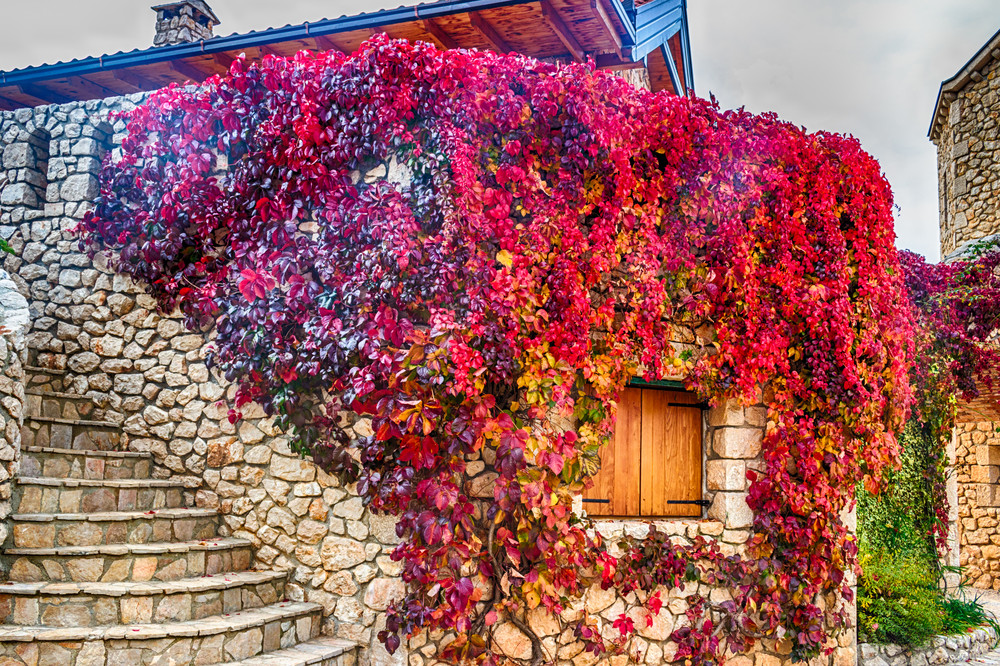

Everytime you’re keen on the look of an ivy-covered façade, Virginia creeper (Parthenocissus quinquefolia) is an excellent selection.
Virginia creeper is a quick and vigorous woody vine, with palmately compound leaves composed of 5 serrate leaflets, every about six inches extended.
In spring leaves are lime coloured and slowly transition to hunter inexperienced in summer season season, ending in autumn with dazzling shades of scarlet and magenta.
It furthermore bears tiny blue-black berries, one completely different useful meals present for birds over winter.
Though Virginia creeper could also be very easy going – it should develop in almost any daylight state of affairs and soil selection – it have to be planted in a spot the place it has room to develop.
Virginia creeper helps retains buildings cooler in summer season season by offering a bit of bit little little bit of shade to the wall flooring.
It attaches to brickwork and completely completely different vertical surfaces with little sucker disks, so it gained’t hurt your masonry like completely completely different vines that cling with penetrating roots.
Nonetheless, you’ll wish to trim it as soon as extra yearly and shield it distant from wiring, shutters, and gutters.
This clinger is native to central and jap North America, and is hardy in zones 3 to 9.
7. American Beautyberry
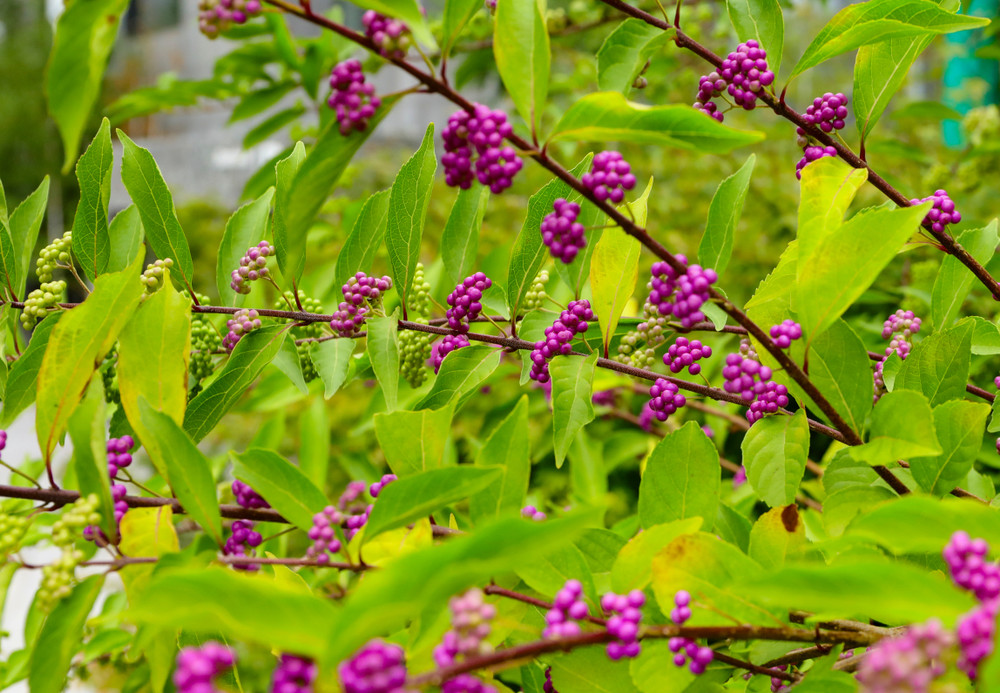

Whereas the autumn yard should rejoice the excellent present of colours of the season, make sure to depart room in your yard beds for fascinating shapes and textures.
The American beautyberry is one event the place its foliage is pretty odd, nonetheless is cherished for its big clusters of violet drupes that persist by way of winter.
The berries are edible, nonetheless are fairly astringent and might solely be consumed in small parts. They’re typically utilized to make jellies and wines, or depart them on the division for foraging animals.
Offering a stunning distinction in your foliage crops, beautyberry grows as a unfastened shrub, solely 3 to six toes as tall and broad.
It bears its fruit most profusely in full picture voltaic and when varied are planted collectively.
American beautyberry is hardy in zones 6 to 10.
8. Blue Star Amsonia
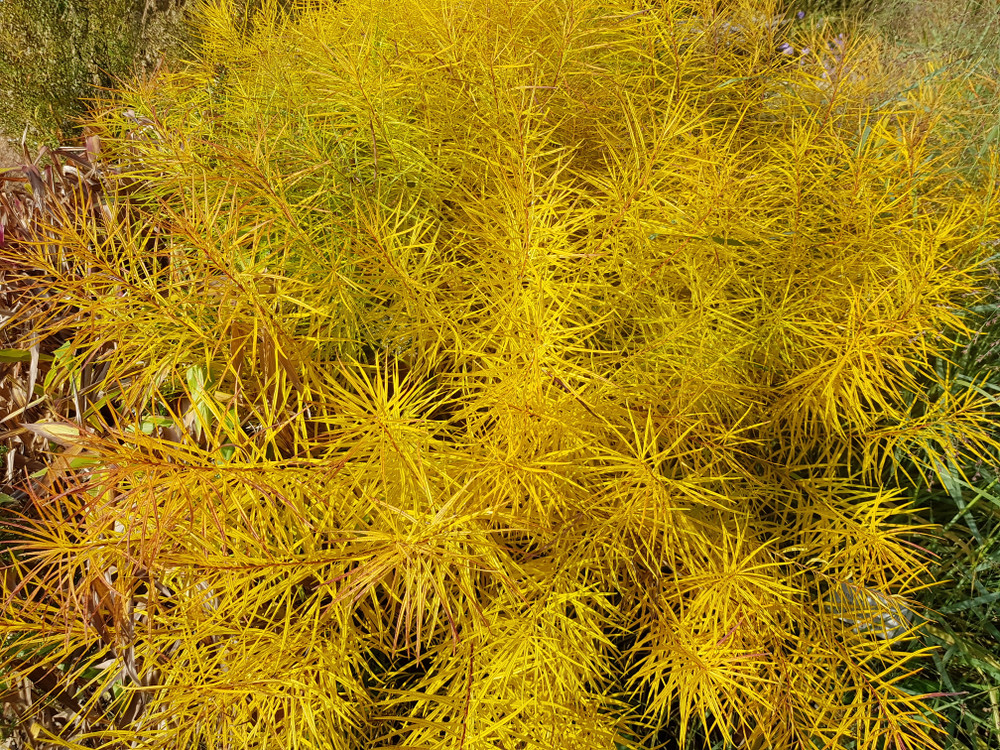

Discovered rising all through the wilds of the Ouachita Mountains in Arkansas, blue star amsonia (Amsonia hubrichtii) is an upright, mounding plant that produces clusters of ghostly blue star-shaped flowers in spring.
Its ethereal and comfy needle-like foliage is vivid inexperienced all by way of the summer season season, nonetheless turns a flashy golden yellow to burnt orange in autumn.
The feathery and bushy enchancment conduct, reaching 3 toes excessive, makes an stunning distinction when planted alongside walkways or as a backdrop for fall bloomers like autumn crocus and mums.
Blue star amsonia has a extraordinarily easygoing nature, merely plant it in full picture voltaic in zones 5 to eight.
9. Change Grass
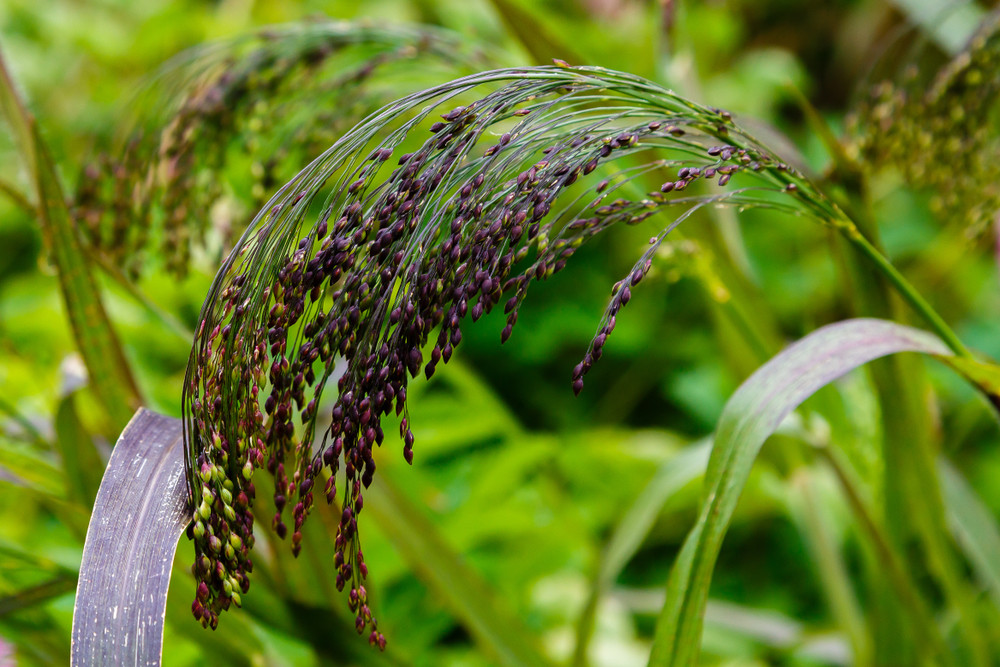

Change grass (Grow to be a panic ‘Shenandoah’) is a perennial, heat season grass present in quite a few North America east of the Rocky Mountains.
A mandatory plant all through the tallgrass prairie ecosystem, change grass might be fairly decorative, along with each texture and shade to the yard.
Rising in 3 foot excessive clumps, its stiff leaves protect upright all by way of the season.
The foliage begins as bluish inexperienced with purple highlights in summer season season, turning shades of purple, burgundy, and wine in fall. When in bloom, it bears reddish pink floral panicles that seem to hover over the leaves like a cloud.
Domesticate change grass in full picture voltaic to half shade, in zones 5 to 9.
10. Virginia Sweetspire
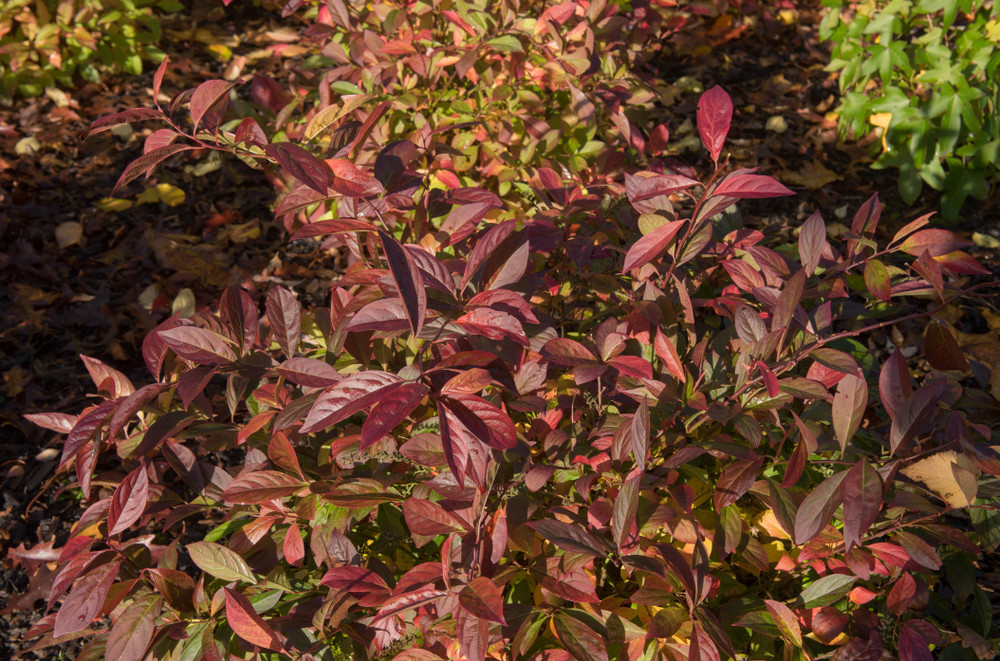

Virginia sweetspire (Itea virginica ‘Henry’s Garnet’) is a flowering shrub native to the southern United States.
Its rounded enchancment conduct, further broad than tall, consists of pretty only a few arching stems dappled with easy oval leaves.
In Would possibly, it explodes in blooms – aromatic, small white flowers in drooping racemes cowl the entire plant.
Come autumn, Virginia sweetspire slowly transitions from inexperienced to gold, orange, and eventually, a wealthy crimson purple. The precise cultivar, ‘Henry’s Garnet’ has in all probability the best fall shade of the sweetspires.
Grown in zones 5 to 9, Virginia sweetspire prefers full picture voltaic nonetheless is adaptable to shade.
Plant it in a spot that has good drainage nonetheless is in any case moist, close to streams or low mendacity areas.
